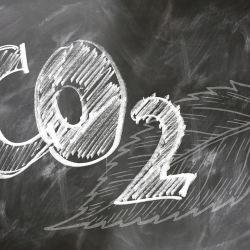The Golden State instituted a program to reduce carbon emissions to 40% below 1990 levels (the cap), by providing carbon credits to account for those excess carbon emissions (the trade). Economists worried that the job loss associated with industries with excess carbon emissions would not be offset by increasing jobs in “green” industries. A new study reports mixed results.
Consider a company producing excess carbon emissions. They can comply with the new caps and purchase carbon credits to offset their excess. Or they might lobby to make those caps voluntary or significantly delayed – a form of “regulatory capture.” Or, given a large enough company, they may simply move those operations out of the area to some more favorable region, termed “leakage.”
The research, reported in Regional Studies, looks at the initial changes in greenhouse gas (GHG) emissions and the economy at the county level since cap and trade was introduced in 2013, using the neighboring states of Oregon, Nevada, and Arizona as the controls. Gross Domestic Product (GDP) at the county level on a per capita basis came from the US Bureau of Economic Analysis, and GHG again at the county level on a per capita basis came from the EPA. Additionally, the EPA provided facility-level GHG emissions data. With all the data in hand, the researchers did what economists do, regression analysis.
The good news – cap and trade did not alter local economic growth compared to counties bordering on California. The bad news – cap and trade made a “negligible” difference in the emission of GHGs at either the county or facility level.
“Overall, these findings reveal the ineffectiveness, at least in the short term, of the CATP in curbing GHG emissions.”
Why might that be?
Taking a closer look at the facility-level GHG emissions, the researchers found that parent companies with multi-state presences did not “leak,” shifting their GHG emissions out of state; instead, they “rebalanced their ownership portfolio,” unloading those high emission facilities on new owners. Interestingly, the purchase of carbon credits at auction remained relatively flat during the study period and very close to the “reserve” price. [1]
Another possibility is that cap levels are set too high, that the “stick” is not strong enough to motivate new behaviors. This is where regulatory capture when an industry has “undue” influence on regulators, frequently through lobbying efforts, has a significant role. Among California’s cap and trade program features that might fit in this category are compliance “instruments” – emission allowances and carbon credits designed to ease the transition away from GHGs. But these instruments have no expiration date, and forward-looking companies have banked almost enough of those credits to cover all GHG reductions scheduled between 2021 and 2030. As I have written, the actual value of carbon credits in achieving real GHG reductions remains unclear. A legislative attempt to put an expiration date on those instruments failed.
[1] For those unfamiliar with auctions, the reserve price is the lowest amount acceptable to the seller. If offers are below that price, the auction item, in this case, carbon credits, is withdrawn.
Source: Keep calm and carry on emitting: cap-and-trade rules, local emissions and growth Regional Studies DOI: 10.1080/00343404.2023.2194315

